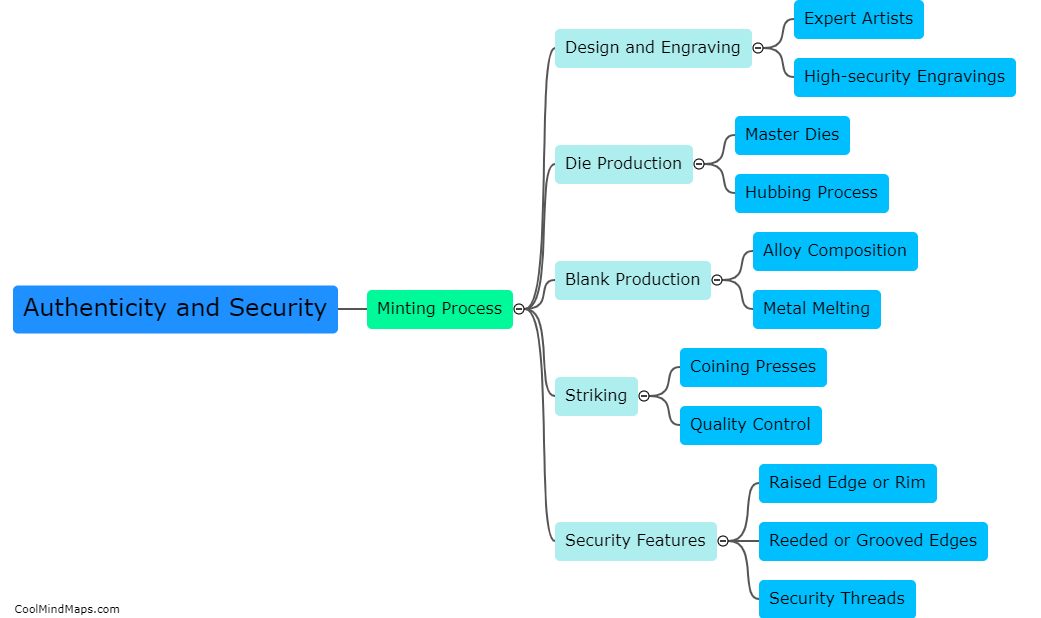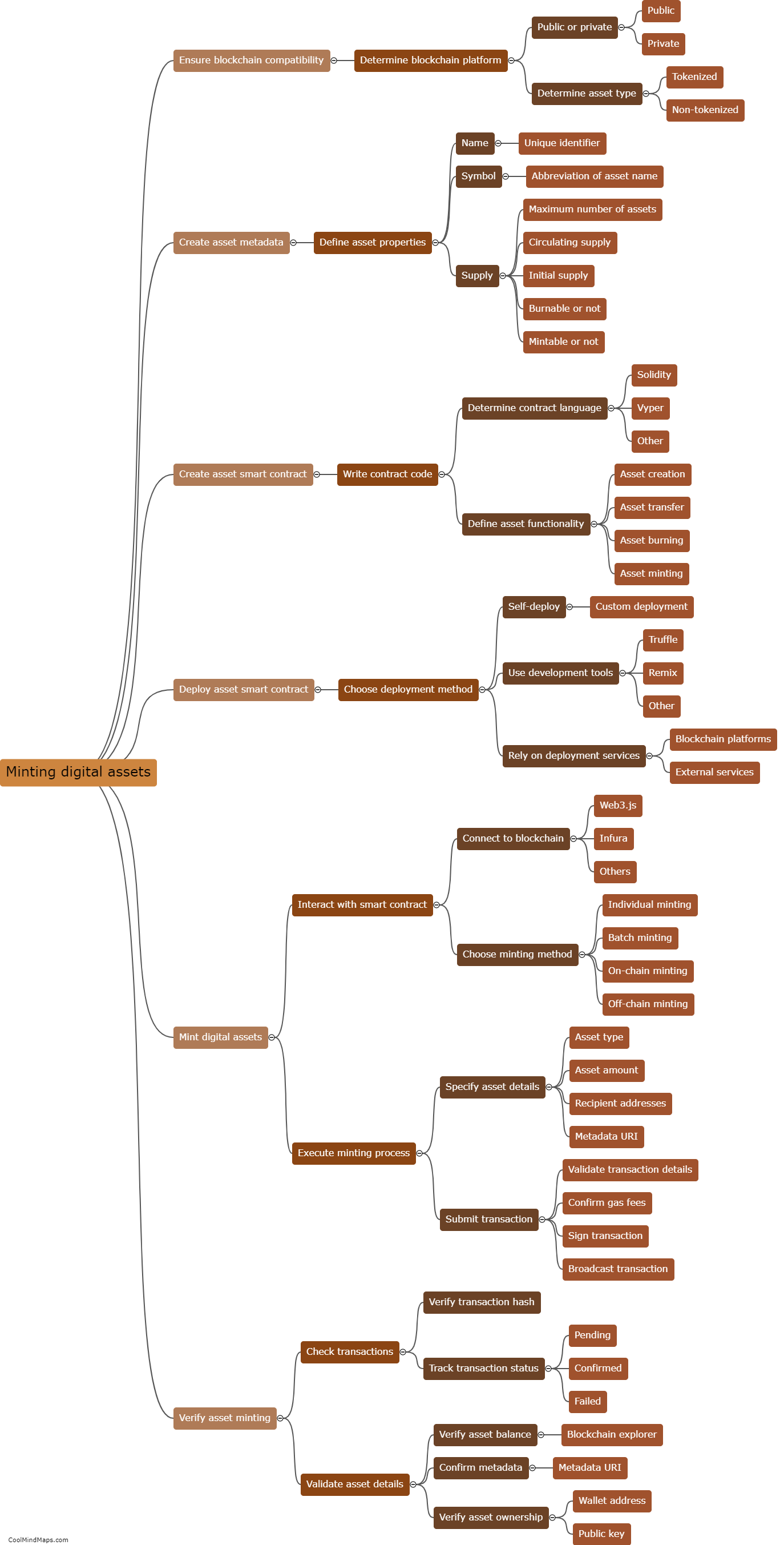How does the minting process ensure authenticity and security?
The minting process plays a vital role in ensuring the authenticity and security of coins. To begin, the minting process involves the use of high-quality materials, such as metals and alloys, to guarantee that the coins have the desired characteristics, such as weight, shape, and appearance. The process also employs advanced techniques, including precision engraving and embossing, to create intricate and unique designs, which make counterfeiting difficult. Additionally, security features like micro-lettering, holograms, and specific patterns are often incorporated onto the coin's surface to further deter counterfeiters. With stringent quality control measures at every stage, starting from the design process to the final stamping, minting ensures that each coin produced is authentic and secure, instilling confidence among users and protecting the monetary system from counterfeit threats.

This mind map was published on 11 September 2023 and has been viewed 88 times.











